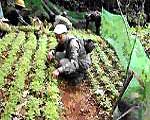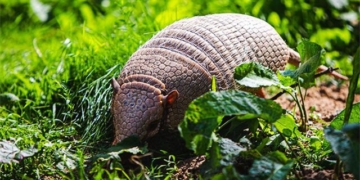The Huê tree is an extremely rare hardwood species found only in the limestone mountains of Phong Nha – Kẻ Bàng. For many years, the Huê tree has been classified as extinct due to illegal hunting and exploitation. Recently, the Phong Nha – Kẻ Bàng National Park Scientific Research and Rescue Center successfully propagated the Huê tree using cutting and seed sowing methods.
 |
(Photo: VTV) |
Approximately 1,800 seedlings have been successfully propagated, marking the efforts of Engineer Võ Bá Phong and his colleagues over the past three years. Economically, the Huê tree ranks just behind agarwood. In addition to the success in propagation through cuttings combined with growth regulators to create callus tissue and stimulate rooting and cell division, the engineering team has now expanded their propagation efforts to include seed sowing.
Engineer Võ Bá Phong, the project leader, stated: “We have implemented experiments using seed sowing methods and found that the germination rate of the seedlings is very high. Seeds from a mother tree aged 2-3 years have a higher germination rate than those from a 1-year-old mother tree. Currently, the seed source is still very limited, but the germination rate in our recent trial batch has reached over 80% – which is quite promising.”
According to the Phong Nha – Kẻ Bàng National Park Scientific Research and Rescue Center, the source of ancient Huê wood in Vietnam has nearly been depleted due to illegal logging. One cubic meter of finished Huê wood is priced at approximately 500-600 million VND before being exported to Taiwan and Hong Kong, making this species (used for incense and embalming coffins) highly sought after. Currently, smugglers are offering very high prices for the remaining Huê wood in Laos. A conservation project for the rare Huê species is being considered and implemented to protect the biodiversity of the Phong Nha – Kẻ Bàng region.
Engineer Võ Bá Phong also mentioned that the Huê tree is suitable for a variety of land types, especially hilly areas in Phong Nha – Kẻ Bàng and its buffer zones. Some households that have planted seedlings have reported excellent growth, with 5-year-old trees having diameters ranging from 5-10 cm. In the future, the center plans to cultivate this tree species and develop longer-term reforestation programs.




















































